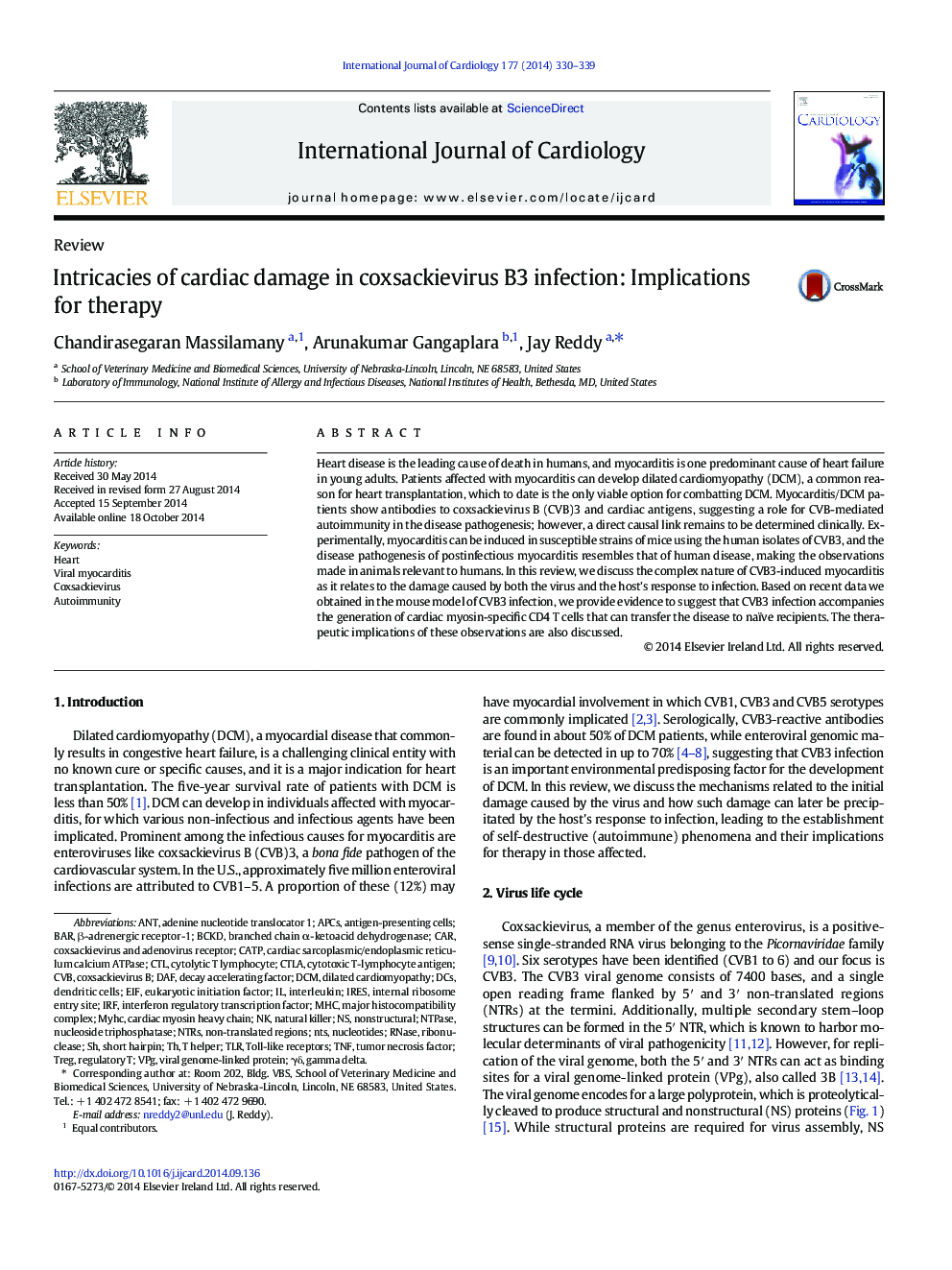| کد مقاله | کد نشریه | سال انتشار | مقاله انگلیسی | نسخه تمام متن |
|---|---|---|---|---|
| 5970387 | 1576176 | 2014 | 10 صفحه PDF | دانلود رایگان |

- Coxsackievirus B3 is a common suspect in patients with chronic myocarditis/DCM.
- Autoimmunity is suspected, but a direct causal link remains elusive clinically.
- Damage by autoreactive T cells may be a key mechanism in chronic viral infections.
Heart disease is the leading cause of death in humans, and myocarditis is one predominant cause of heart failure in young adults. Patients affected with myocarditis can develop dilated cardiomyopathy (DCM), a common reason for heart transplantation, which to date is the only viable option for combatting DCM. Myocarditis/DCM patients show antibodies to coxsackievirus B (CVB)3 and cardiac antigens, suggesting a role for CVB-mediated autoimmunity in the disease pathogenesis; however, a direct causal link remains to be determined clinically. Experimentally, myocarditis can be induced in susceptible strains of mice using the human isolates of CVB3, and the disease pathogenesis of postinfectious myocarditis resembles that of human disease, making the observations made in animals relevant to humans. In this review, we discuss the complex nature of CVB3-induced myocarditis as it relates to the damage caused by both the virus and the host's response to infection. Based on recent data we obtained in the mouse model of CVB3 infection, we provide evidence to suggest that CVB3 infection accompanies the generation of cardiac myosin-specific CD4 T cells that can transfer the disease to naïve recipients. The therapeutic implications of these observations are also discussed.
Journal: International Journal of Cardiology - Volume 177, Issue 2, 15 December 2014, Pages 330-339